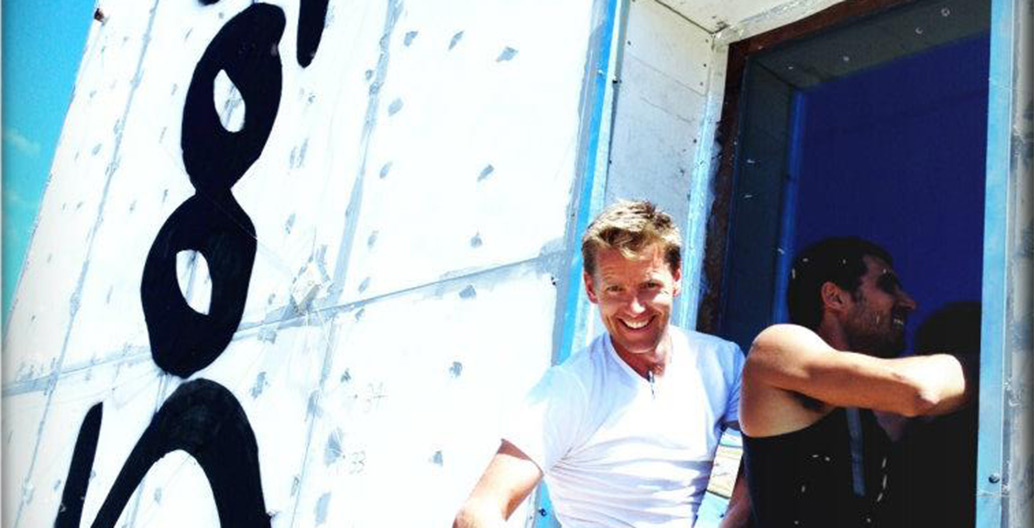
Fertile ground for change: Joost Bakker tackles the toxic city
Joost Bakker’s projects pursue an ever-expanding interest in detoxing environments and creating ways to live better on a cleaner planet with healthier ecosystems. The indefatigable investigative creator will be appearing in Foreground’s Toxic City Forum at the NGV for Melbourne Design Week.
Joost Bakker is committed to a bewildering array of projects that have challenged wastefulness. Described in interviews as a designer, builder and installation artist, prophet and polymath, sustainability campaigner, eco-warrior and creative disruptor, he has also been called a mix of mad scientist and day-dreamer. Bakker identifies himself as an artist. Equally open to talking about failed, stalled or forthcoming projects, Bakker views them as experiments or tests with lessons to learn and ideas that might be improved on. Whether they are commercially successful does not seem to be of much interest. “I’m hopeless at commercialising stuff. It just doesn’t interest me and that’s my biggest problem! People come to me and say they’d like to partner with me on something but I’ve already moved on to the next thing.”
Coming to grips with the toxic city
Poison Planet by Australian science writer Julian Cribb is one of many touchstones for Bakker’s environmental philosophies. “Cribb says there’s 140,000 chemicals in the world and every year we are adding 1000 new ones. They don’t disappear. I’m obsessed with asking why we are doing this,” he says, referring to humans’ constant production of chemicals and by-products.
Bakker is known as the creator of beautiful floral upcycled installations and for zero-waste eateries including several iterations of the Greenhouse, and Silo, which became Brothl. His projects fearlessly investigate how to reduce, reuse and recycle all sorts of waste. But behind this is an understanding that it is not just waste itself that is a problem, but what it does. And this is a question of toxic processes and toxic pollution throughout the lifecycle of products.
His latest thoughts are turning again to some basics – human waste. This will be the topic of his presentation as part of the Toxic City Symposium at Melbourne Design Week. “My talk is about faeces and urine. It’s like a rubbish bin with a lid. You throw it in and it’s somebody else’s problem. Toilet’s the same. You flush it and it’s somebody else’s problem.” In the same way, food production is full of problems invisible to us. Echoing The Need to Grow, a film premiering in Australia at Transitions Film Festival, Bakker recently declared food one of the most destructive things on the planet today. “You can’t keep pulling food out of soil and expect it to nourish you. I think we are all depleted. Synthetic fertilisers have hidden that epidemic.”
Bakker highlights the role of fertilisers in contributing to pollution, by way of first explaining the dark history of synthesising ammonia fertiliser from gas. The Haber-Bosch process responsible for saving millions of lives from starvation and ending just as many through the prolonging of war and its adaptation as a chemical weapon. But even its role in fertilising soil is now linked to pollution. The addition of ammonia compounds to the soil disrupts the nitrogen cycle, which changes the chemical composition of our drinking water, air and soil, affecting the health of huge numbers of people.
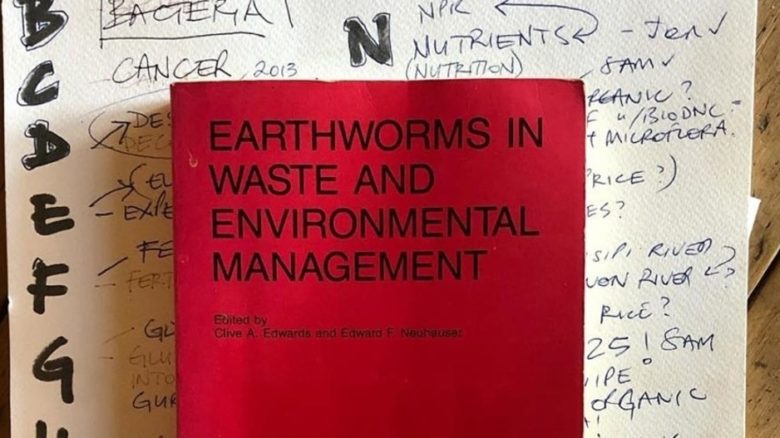
Bakker researches widely to inform and inspire his zero-waste projects. Photo: Joost Bakker
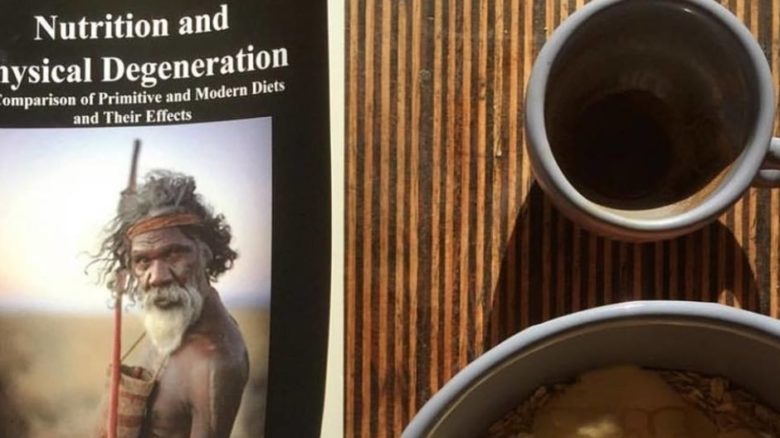
The work of Weston Price on the physiological effects of nutrition has influenced Bakker's thinking. Photo: Joost Bakker
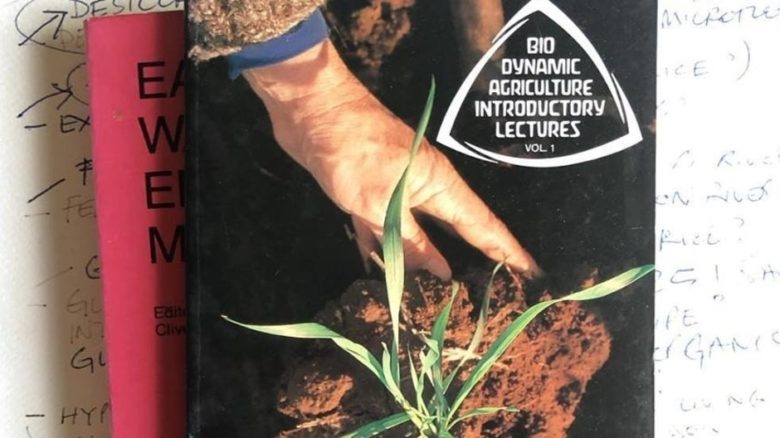
The father of Biodynamics Alex Podlinsky is a strong influence on Bakker's ideas on waste, nutrition and recycling. Photo: Joost Bakker
For Bakker, over-farming and extreme use of fertilisers depletes both the soil and, in turn, the micronutrients of our food: “Artificial fertilisers provide nitrogen and phosphorus. But what about magnesium, copper, iron, manganese, all the other elements?” Pointing to research from the 1920s on nutrient-rich diets of Indigenous peoples including Australians and the recent the work of Dan Barber, Bakker describes the link between not getting enough micronutrients and obesity.
In the food we eat, we have plenty of calories but not all the nutrients we need, and “fat has the highest concentration of micronutrients that you can possibly find”. Bakker supports this anecdotally, recounting footballers coming to his soup cafe Brothl saying that they would typically crave three or four big macs at a time, but if they had just one bowl of his soup they couldn’t eat another thing. “It’s because your body is craving nutrients, not anything else.” Bakker points to the work of Dan Barber. Appointed by President Barack Obama to serve on the President’s Council on Physical Fitness, Sports and Nutrition and an advocate of bringing principles of good farming directly to the table, Barber was a presenter at the 2015 Melbourne Food and Wine Festival. Many Australian chefs are also investing directly in better farming practices, such as Simon Bryant who founded DirtyInc to grow pulses “with as little interference in its growing and preparation as possible” on Kangaroo Island, South Australia.
The influences of a Dutch upbringing
In all his efforts, Bakker seems to draw on personal history as much scientific research. Born in The Netherlands, Bakker came to Australia with his parents when nine years old. He still remembers much about his life growing up there in a relatively small town of around 300. It was surrounded by farms, but within cycling distance of a larger town of Alkmaar where he went to school, riding home for lunch and back again.
Visiting family in Holland has given him a perspective on changes there, compared to shifts in Australia. His father wanted to come to Australia partly because of the increasing pollution in the Netherlands. “Holland was a really polluted place – that’s the reason we left,” says Bakker. “We had acid rain in the early 80s. Birds were dying, fish dead in the canals. We went back in ‘87 and it was worse. Then I went back in 1993 and the country had done a complete turn-around.” The Netherlands had banned many chemicals being used in agriculture. And little things such as not mowing nature strips and letting the grass go to seed, brought back insects, butterflies and frogs. The Netherlands is completely man-made, as many Australian designers know well from the work of Dutch landscape architects and architects in the 90s. “If they want a beach, they build one.”

Bakker came from Holland aged nine, when toxic acid rain was common, the son of generations of tulip farmers.
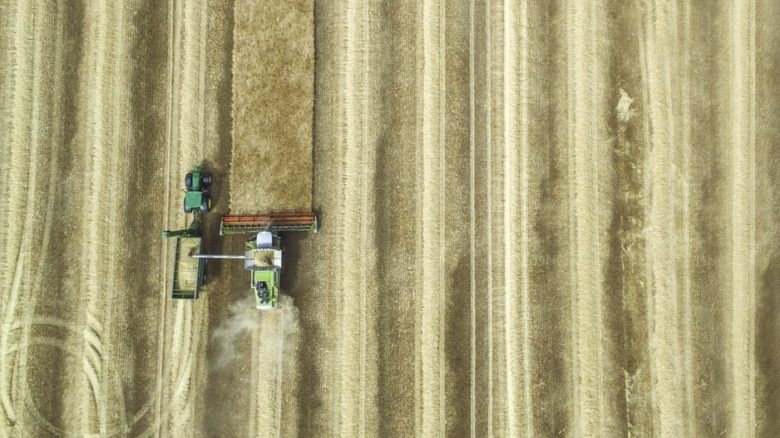
Artificial fertilisers have enabled us to feed billions but at a high environmental and ethical price.
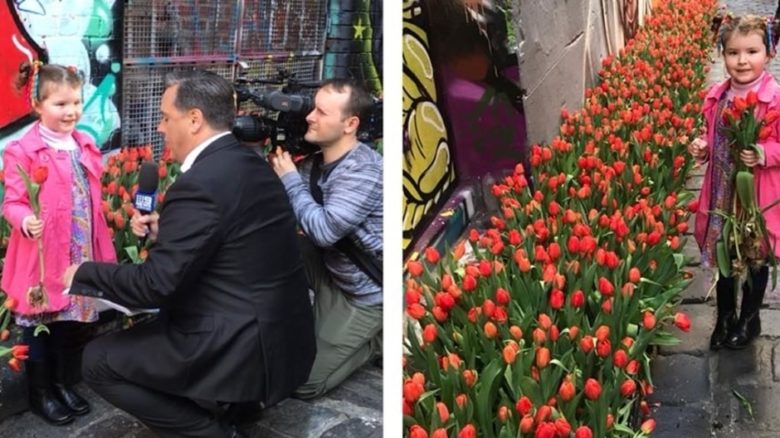
Tulips in Hosier Lane, Melbourne, carried a message about waste and unlabelled imported flowers. Photos: Kate White
Bakker also explains that historically, The Netherlands employed waste management systems worth revisiting today. As agricultural land was reclaimed from the sea it was very poor and slowly established and fertilised by manure including human waste collected from cities. This also held garbage such as pipes, ceramics, glass and some coins, which he would find as a child working with his father in the fields. The idea of recycling human waste and extracting its nutrient value is on Bakker’s mind at the moment. While reuse and zero-waste strategies are a core part of all his projects, from floristry to building design and restaurant food and beverage supply, the idea of recycling human waste is a trickier proposition.
Recycling human waste: relearning lessons of a not-too-distant past
Bakker admits that urine and faeces is toxic. But it doesn’t need to be. “Yes there’s bacteria that can kill you, but it’s not difficult to make it safe” he explains. A key concern for Bakker is the use of chemical fertilisers and the wastefulness of nutrients in human waste, which had been used in agriculture until very recent human history. “At the moment we’re exporting our nutrients into the sea, basically sending them down the drain. Seventy percent of nutrients leave our body with urine, and you can easily turn it into fertiliser.”
The first pop-up Greenhouse at Federation Square in 2012 planned to capture and reuse patron’s urine. It takes only 25 people to provide enough fertiliser for a hectare of crop. He worked with Dr Steve Cumming, inventor of Caroma’s dual-flush toilet, to build and install eight urine-diverting toilets, including waterless female urinals. But they were unable to use the urine there. Instead they ended up using it on a green crop in Daylesford.
A more recent project aimed to build a zero-waste house on a decontaminated service station in Kallista. Based on research and experiments so far he has no doubt that we can completely feed ourselves right where we live. “The average family uses almost 200,000L of water per year, so what do you need for growing plants? Nutrients and water.” The goal at Kallista was to design a 100m2 home for two people. “You can get three to five tonne of food from that space. We consume between 1500 and 1750 kilos of food a year so I think it’s possible, simply by using the nutrients and water we currently regard as waste.” But he has failed to get a building permit and is looking at doing it as a pop-up next year in the city.
“My talk at Toxic City will be about nutrient density. Organic waste is the same thing – we need to treat and use it. I say that the more it smells, the more we need it. Stuff that smells like fish and offal – that’s what we need in the soil because that contains the most nutrients.”
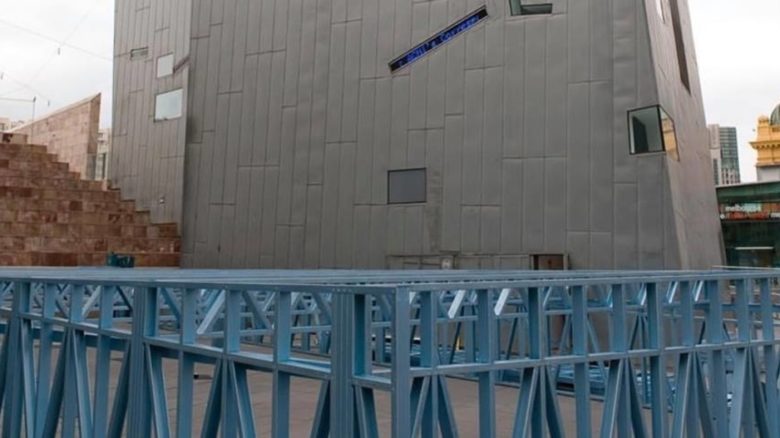
The frame for the first zero-waste Greenhouse in Federation Square. Photo courtesy Joost Bakker
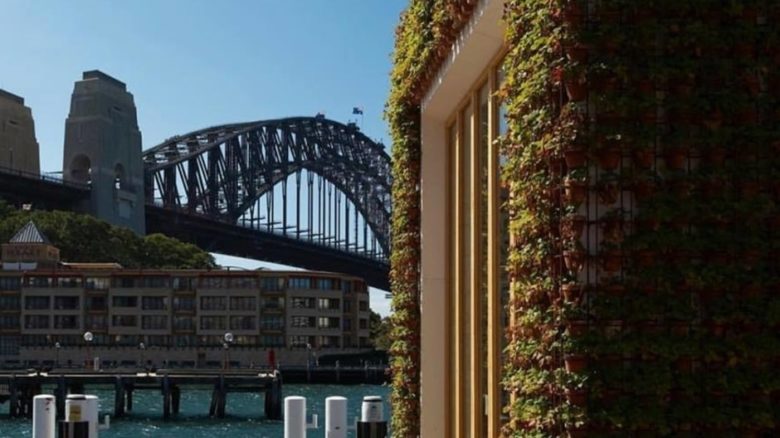
The zero-waste Greenhouse, Sydney, featuring Bakker's vertical garden, was a big success. Photo courtesy Joost Bakker
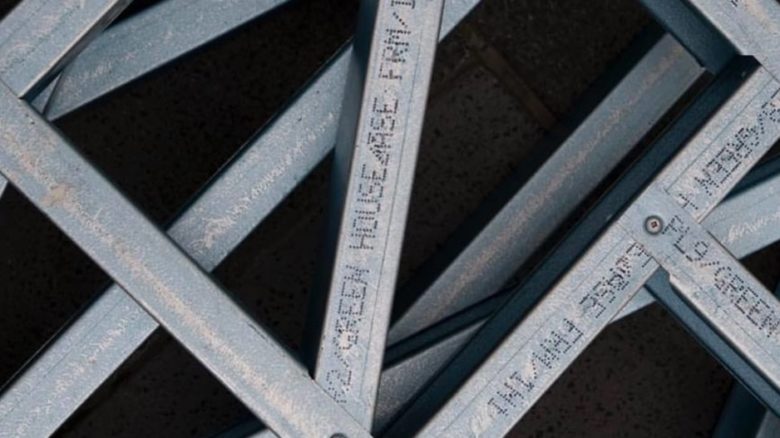
Framing detail for the first zero-waste Greenhouse in Federation Square. Photo courtesy Joost Bakker
The urge to make and build
Bakker trained as an artist and florist but his creativity has been readily adapted to pursue interests and curiosity in a range of projects that have crossed many disciplinary boundaries. Bakker designed and built his own house with wife Jennie in Monbulk on six acres. It is a beautiful building in a scenic spot at the foot of the Dandenong Ranges. It is designed so that everything can be dismantled and recycled, avoiding glues, toxic finishes and use of chemicals in general. It is steel framed on a 90 percent recycled concrete slab with insulating straw bale infill walls, some blockwork and plywood floor and ceilings.
Despite building his own house, Bakker has no formal training as a builder or architect. But he has always been interested in buildings. “I remember when I was 12 years old designing my house and all the details about how to build it. When I left school at 17, my brothers needed a big shed. We had plenty of stuff lying around so I pretty much made the whole thing out of what we had. It’s still there.” He believes that lack of training helps him see things with fresh eyes.
One thing he has noticed about Australian housing is a lack of concern for insulation. Bakker makes the leap from the observed insulating properties of straw for agriculture and its potential for housing. “In Holland they use straw to protect bulbs from the frost, so my dad said why don’t we use it here to protect bulbs from the heat? And we were able to get really early freesias and tulips. I remember sitting on straw bales, feeling the warmth.” Straw bales were also cheap, so as soon as he learnt that people were using them in construction, he investigated the possibilities. “I looked at using them in a modern system, combining straw with other sustainable and recyclable materials.”
It is important to Bakker to avoid use of chemicals and so the insulating properties of straw led him to believe it was worth testing straw as an fire-retardant material, in combination with other chemical-free resistant cladding and framing. Fire retardants and foam containing per- and poly-fluoroalkyl substances (PFAS) are being linked to a range of health problems including cancers. There is a growing body of scientific evidence that PFAS is toxic to humans and to ecosystems. An experiment Bakker undertook with the CSIRO in 2012 found that a straw bale insulated house maintained an internal temperature of 35 degree celsius while the external temperature reached 1000 degrees. “That experiment was so powerful because we proved you don’t need fire retardants and chemicals to have a fire-resistant house. It’s possible with clever use of natural materials.”
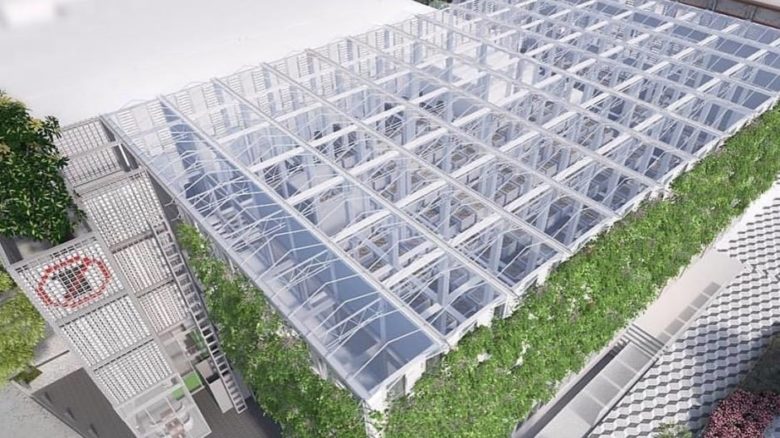
Unrealised zero-waste project for Queen Victoria Market. Photo courtesy Breathe Architecture and Joost Bakker
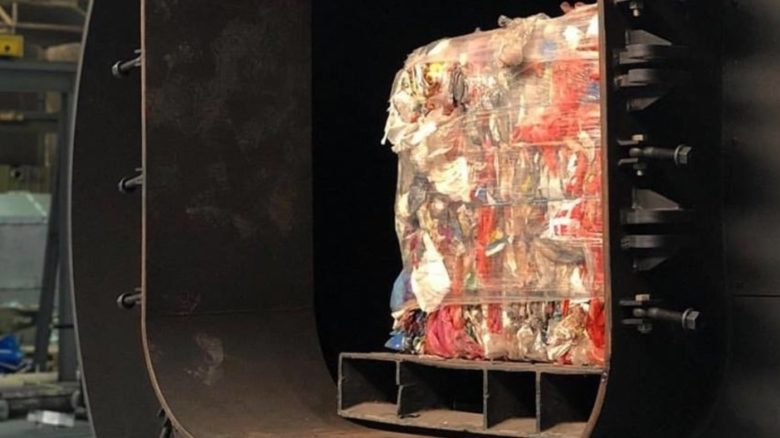
Bakker's pyrolysis plant produces energy from burning non-recyclable plastic. Photo courtesy Joost Bakker
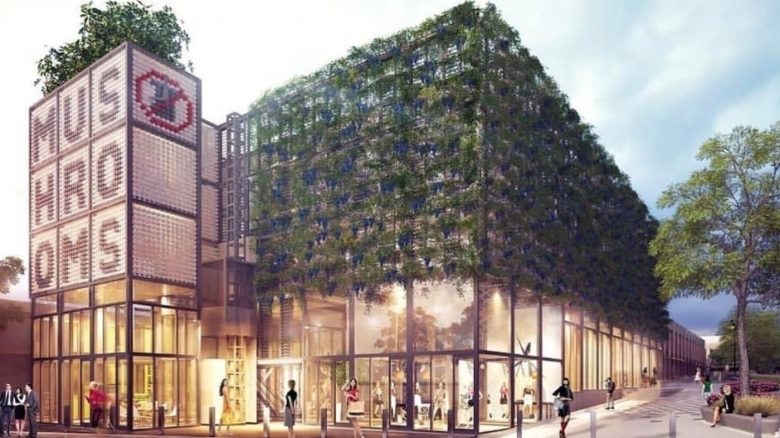
Proposal for a zero-waste building at QIC Eastland. Photo courtesy Breathe Architecture and Joost Bakker
Frustration and optimism for the future
All design professionals can likely relate to the multiple frustrations that can beset every stage in the delivery of built work. They range from finding supporters, organising finance, applying for permits, supervising others, advertising and arguing benefits, facing public and private criticism and fighting for the integrity of they project all the way. A whole national conference was devoted to unpacking architectural ‘risk’.
Bakker notes the impact of social media backlash as well. They can happen very quickly and can be very destructive. “Especially if you don’t like confrontation, taking risks in this environment can be challenging.” Where food is involved, it can also be especially damaging. So talking about food waste and experimenting with food production is a brave undertaking.
Yet he is no stranger to forging ahead with projects he believes are of value. Last year he filled Hosier Lane with tulips in the early hours of the morning. They were grown by his brother and had been rejected as not suitable for commercial sale. This was the most spontaneous thing Bakker had done. There was very little planning but it got a lot of media coverage. “This was bizarre because very few people knew about it,” he muses. “I wrote an Instagram thanks to the City of Melbourne for giving me permission, but they never had.” Breakfast radio found out and did an interview at 7.30am and 15 minutes later there were 500 people in the lane. But it wasn’t just about beautifying a laneway. Like all his projects there is a message. As well as restrictive standards for commercial sale, local growers compete with imported flowers that do not need to be labelled. “Of course my brother is pretty frustrated that people don’t know where flowers come from so they can choose what they’re buying. I thought this would be a good opportunity to raise awareness.”
Bakker was frustrated too that the message of his Greenhouse pop-ups and Perth restaurant seemed to be lost amidst the general enthusiasm for its novelty. Both were extremely popular. “Melbourne was okay, but Sydney was crazy. We had a 70-seat restaurant and allowed to have 120 people upstairs. We had 450 in a queue one night. We were roasting almonds to give out.” Still the project had no permit. For Bakker, it is better to seek forgiveness than secure permission.
However, not all projects work out. One that failed to happen as originally intended was a pyrolysis plant, a machine that would generate electricity from waste plastic that couldn’t be recycled. Working with Jeremy McLeod of Breathe Architecture, Bakker spent two years developing a zero-emission building for QIC Eastland. “We did an audit and of how much plastic they were generating and we said there’s technology that can turn plastic into oil. The building can be completely powered by the plastic going to landfill. For whatever reason they decided not to go ahead with that.” He confesses he was devastated by this and another subsequent failure, so took to social media at 2 o’clock in the morning. The next day the manager at the Bendigo Bank in Monbulk contacted him to say that she thought there was enough support in the local community to get something happening. “Three days later I had 30 people around my table – all locals – six of them agreed to invest and put in a couple of million dollars and now it’s working!”
He enthuses that the machine is capable of turning a tonne of plastic into 900L of diesel. It’s a closed system, oxygen free, although diesel is burnt to heat it up. A small amount of diesel from the previous batch is used to do this and as it heats up it produces syngas. “We turn the diesel off and go over to syngas which is generated by the process. So the key is to produce as much diesel as possible because you can’t store or trade in syngas. You have to burn it as it’s produced.” The technology is not new but isn’t much used, which is another source of frustration. “To give you an idea, the waste-to-energy that is being used in Denmark for example that everyone is going on about – that’s a 10 percent energy yield. This is 85 percent energy yield. With waste-to-energy you are just burning it. They scrub the chimneys with water, so you have highly toxic contaminated water which they filter but then you have toxic sludge. With this process you do have operational waste and you can have contamination up to 10 percent.”
Despite a litany of delayed and abandoned projects, Bakker is an energetic optimist. Partly he thinks things just take a little time. “My family weren’t eating pasta when they came to Australia. How long does it take to change the way we eat? Ten years or so? That’s actually a short period of time.” Like having children, architecture is an act of optimism. Bakker is delighted that his three girls are now starting to help him with projects. “They’re great, and they’re starting to understand my job. Seeing what I do gives their own life perspective, a sense of possibilities.”


